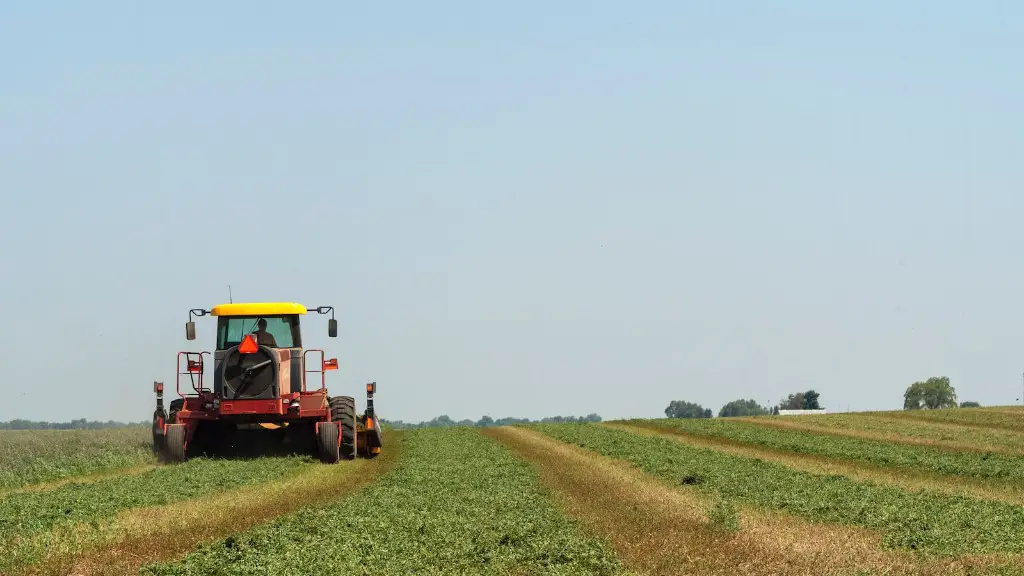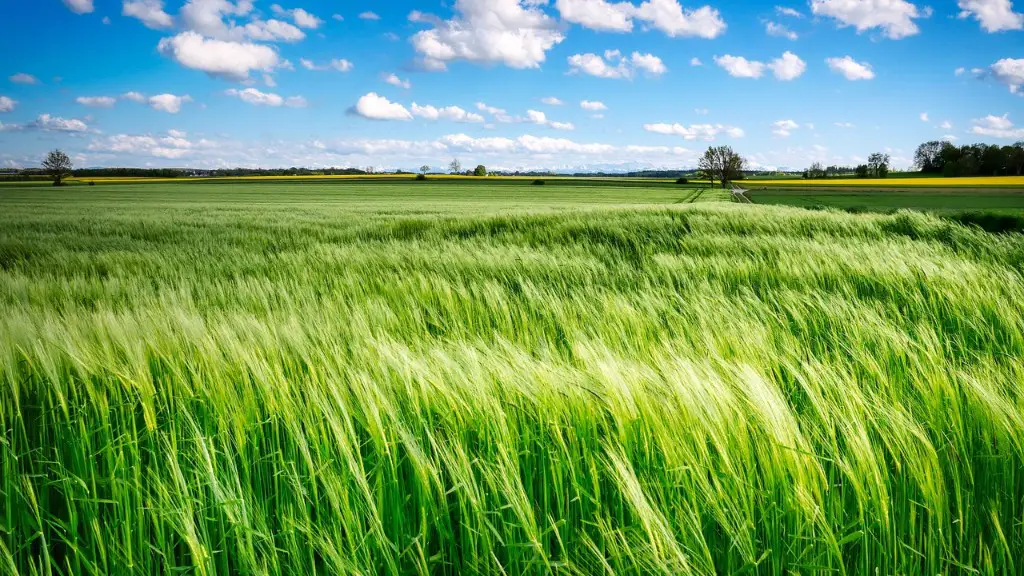Agriculture infrastructure lies at the heart of a country’s food security and economic progress. It consists of the buildings, transport networks, and food supply chains that enable rural and urban population to access and trade food. Well-developed infrastructure is fundamental for driving growth in the agricultural sector, as well as reducing food insecurity, boosting trade, and creating job opportunities.
Good infrastructure improves the efficiency of the food systems, enabling farmers to access markets and improve their livelihoods. By connecting different production and distribution points, it helps to reduce food loss, increase shelf-life and ensure the safe transportation of food. In addition, well-developed infrastructure provides access to education and skills training, clean water and energy powering agriculture operations.
Many governments recognize the importance of investing in agricultural infrastructure and have implemented various projects across their countries. Governments can construct and maintain roads and bridges, offering access to remote areas and connecting individuals, businesses and markets for the distribution of food. Others have introduced initiatives such as subsidies and supportive policies, importantly those related to the access to land, credit and finance, subsidies and tax reduction, skill training, and more.
In addition to governmental investment, the private sector can also play a major role in helping to establish agriculture infrastructure and related projects. The private sector can offer technical experience, financial investment, and management support, as well as innovative methods for addressing complex challenges. In addition, private sector entities can develop networks and assist in innovation, helping to find new pathways to increase food production.
Overall, the importance of agriculture infrastructure in providing economic growth and improving food security cannot be overstated. The right investment, coordination and cooperation between the public and private sector is essential to ensure the development and sustainability of the food systems and supply chains.
Supply chain management
The process of getting food from the farm to the consumer is known as agricultural supply chain management – a key factor in ensuring a nation’s food security. A successful agricultural supply chain is founded on an effective, efficient and resilient infrastructure. This is achieved through the careful coordination of distribution channels, logistics and systems for the collection, storage and transportation of food.
Good supply chain infrastructure is increasingly important in an era of globalization. It is needed to ensure that food items are available in retail outlets and restaurants, as well as for exporting products to other countries. Without it, there can be gaps in the logistics and networks that affect food distribution.
For effective supply chain management, governments, private investors and other stakeholders need to develop and sustain infrastructure, such as storage facilities, transport networks, and technology platforms. This is essential to ensure that food supply is readily available to all.
In addition, they should implement other strategies, including timely access to credit and finance, the participation of key stakeholders, the implementation of training and technical support, and the use of digitization and developing technology that supports the development of agriculture infrastructure.
Climate Change
Climate change has a significant impact on agriculture infrastructure, with implications on food security, livelihoods and local economies. Communities in low and middle income countries are particularly vulnerable to its effects.
In extreme weather events such as floods, storms, drought and heat waves, homes and businesses can be destroyed, leaving rural and urban populations without access to food and services. Poor infrastructure makes these communities more vulnerable, and the lack of resources and the disruption of food supply chains can lead to an increase in malnutrition and food insecurity.
Governments and other stakeholders must recognize and adapt to the effects of climate change. They need to invest in weather resilient infrastructure, improved early warning systems, and adaptation strategies. In addition they should support farmers to benefit from new technological development and the introduction of climate-smart agriculture.
Insurance schemes can also assist in helping farmers to cover financial losses in times of emergency, as well as helping them to access credit for climate-smart investments. It is also important to focus on helping to build the skills and capacity of local organizations, and to foster innovative and collaborative approaches between stakeholders.
Sustainable Infrastructure
The development and maintenance of agriculture infrastructure should be approached from a sustainable and long-term perspective that takes into consideration the environment, the economy and the social impacts of such investments. This requires investment in green technologies and infrastructure, including renewable energy, water management and waste reduction.
Integrating sustainable methods into agricultural practices can help to reduce emissions, improve energy efficiency, conserve water resources and strengthen adaptation and mitigation strategies. Green infrastructure can also incorporate such practices as agroforestry and the sustainable intensification of production in order to reduce soil erosion, improve soil fertility, protect water sources and increase the share of other renewable resources.
In order to develop sustainable agriculture infrastructure, governments should focus on the role of policy and legislation, as well as developing innovative financing and incentive schemes. In addition, partnerships and coordination between stakeholders should be encouraged, as well as initiatives that focus on the development and capacity building of different actors.
Urban Agriculture
Urban agriculture, or the cultivation and production of food in cities, is important for ensuring the food security and livelihoods of city-dwellers. For urban agriculture to be successful, appropriate infrastructure is needed in terms of transport networks, water supply and storage facilities, develop roads for access, and training centers for skills and knowledge.
For countries with increasing urban populations and limited resources, it is essential to develop infrastructure to meet the needs of an ever-growing urban market, as well as providing access to water and safe and efficient ways of distributing goods. Governments should also invest in policies and regulations that support urban agriculture and development projects across the sector.
In addition to providing urban populations with access to healthy, locally produced food, urban agriculture can be used to create employment opportunities, promote entrepreneurship and reduce poverty. Furthermore, it can help to reduce urban food insecurity, reduce emissions and promote ecosystems services, in particular the development of local green spaces.
Agricultural Innovation
In order to develop an efficient agricultural infrastructure, there needs to be a focus on implementing innovative technologies, products and services. The introduction of smart farming, such as the use of internet-of-things technology and remote sensors, allow for the collection of data that helps with the management of resources and the identification of future needs.
Furthermore, digital transformation can help to increase the ability of different stakeholders to interact and coordinate more efficiently, enhancing the effectiveness of food production, production networks, logistics and distribution. Governments should actively encourage and invest in agricultural innovation, supporting private sector initiatives, research and development, and the adoption of advanced technologies.
In addition, the use of Artificial Intelligence (AI) can help to identify areas where food insecurity occurs, such as the prediction of crop yields, weather patterns and agricultural supply chain disruptions. As well as other uses, such as autonomous robots to take on mundane tasks, and the development of agricultural robots that can monitor and manage land and crops, reducing the labor and cost of food production.
Ultimately, the successful implementation of agricultural infrastructure and related projects relies on the involvement of different stakeholders, who need to work together to coordinate efforts and resources for the successful development of a nation’s agricultural sector.





